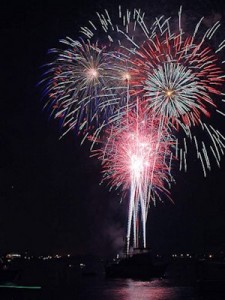 Now, ancient Egyptians did not have or use fireworks, but it is quite interesting that some of the minerals used in pigments since antiquity are what makes the beautiful colors in fireworks displays. The Chinese first invented gun powder and fireworks circa 900 AD, and their culture retains a legendary fascination with things that go boom.
Now, ancient Egyptians did not have or use fireworks, but it is quite interesting that some of the minerals used in pigments since antiquity are what makes the beautiful colors in fireworks displays. The Chinese first invented gun powder and fireworks circa 900 AD, and their culture retains a legendary fascination with things that go boom.
Copper, for instance, is used to make Egyptian blue and green, and it is also what makes the blues in fireworks. In addition, sulfur is used to make vermilion, and it is what makes those glowing brilliant white starbursts in the skies on those warm 4th of July nights. Other minerals like strontium make reds, sodium makes yellows, and even charcoal is used to create the golds. Charcoal has long been a staple in the artist box. Others are lithium/purple, borax/green, while the aluminum powder is what causes the loud booms. Cleopatra surely would have loved it though, don’t you think?
